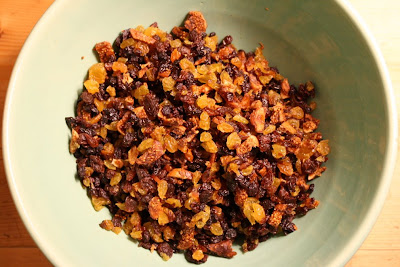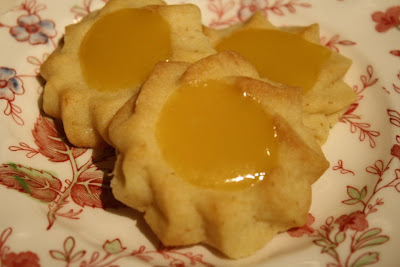I have an ongoing list in my head that includes the subjunctive, organic chemistry, and pie crust. These are but a few of the not-really-that-hard things that people have decided are difficult. Maybe O-Chem really is hard, but I can promise you pie crust isn't.
Pie Crust
8 or 9-inch two crust pie
- 2 cups flour
- 1 tsp. salt
- 2/3 cup plus 2 Tbs. butter, cold
- 4-5 Tbs. water, very cold
- Combine flour and salt.
- Cut butter into pieces and drop into flour mixture. Using a pastry cutter or your fingers, work the butter into flour until butter is well incorporated, but there are still visible pieces of butter. (Recipes often say, 'until mixture resembles small peas,' but I like to leave slightly larger pieces.)
- Using a fork, stir in water one tablespoon at a time, being careful not to add too much. When dough begins to form into clumps, enough water has been added.
- Form the dough into a ball. The dough might be somewhat crumbly, but as long as you can make it into a ball it will be alright. Wrap in plastic and refrigerate at least half an hour before rolling.
Use for pies, pasties, and tarts.
I have heard people talk about 'the trick' to pie crust. There isn't one. There are, however, a few crucial details. The butter and water should be cold. Before adding any water, the butter should be well cut into the flour. You should not, under any circumstances, add too much water. I was talking to my mom while writing the instructions and she said that the maximum amount of water (5 Tbs in this recipe) has never in her experience been too little, but it has at times been too much. Once you have some experience making crust, you'll know what to look for. Refrigeration makes your dough more manageable. It makes it stick together and enables you to roll a thinner crust. Refrigeration can save a very short dough--one that could have used a touch more water--but nothing can save a wet one. One last note: be careful not to over-handle the dough. Mom says it takes a light touch--a manhandled dough makes for a tough crust.
Okay, so I can see why some people might have a complex about making pie crust. But really, once you know what a good crust feels like, you'll wonder why anyone ever buys a pre-made-freezer-burned-good-for-nothing crust. At this time of year I pass countless numbers of just such crusts over my scanner and it takes an act of will not to slip this recipe into people's shopping bags. Maybe this year I will.

















































